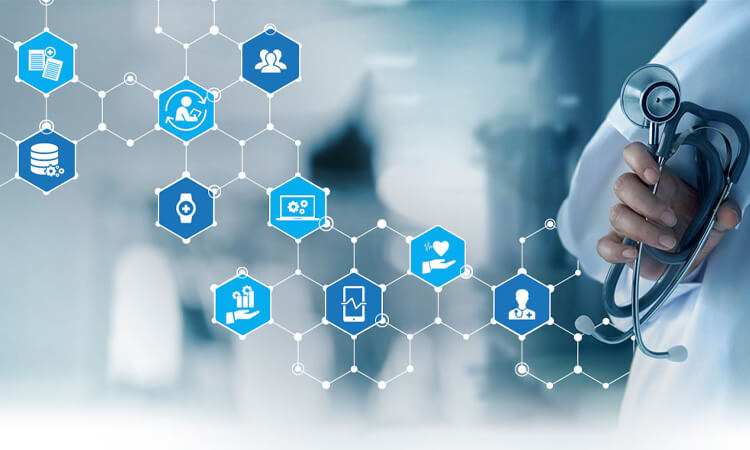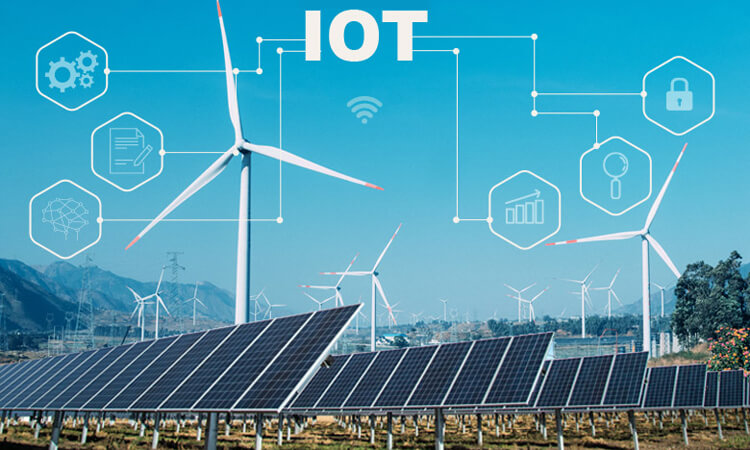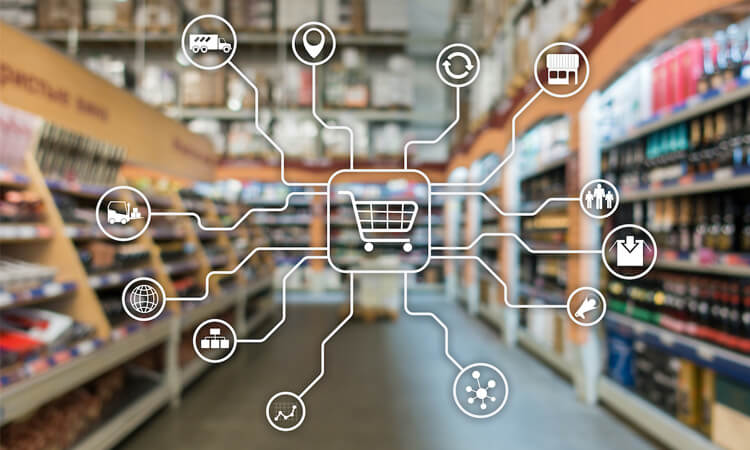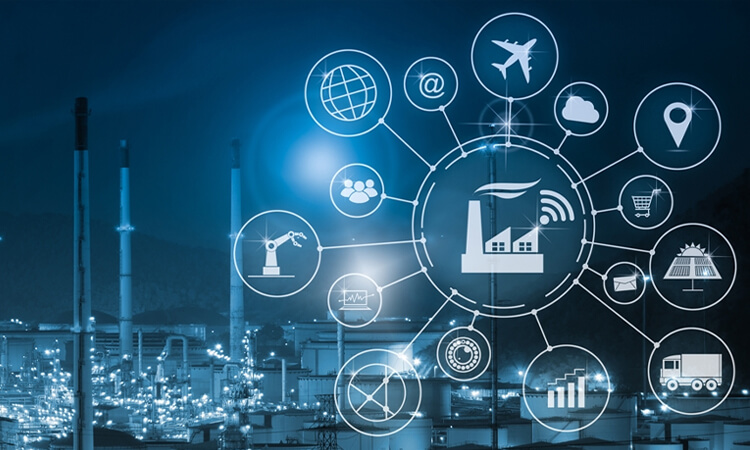The Internet of Things is no longer just a buzzword in the industrial sector. The IoT has recently become a reality thanks to many companies’ efforts to develop innovative technologies and bring them to market. In this article, we will explore how some of the most well-known companies use internet of things industrial applications. We’ll also look at some examples of innovative industrial applications that have already been deployed in different industries.
Different Internet of Things Industrial Applications
Healthcare

Healthcare is one of the most important sectors in the world. It’s also one of the fastest-growing industries, with an estimated 5% annual growth rate. In the future, it will be worth $8.8 trillion- more than 30% of all global spending on goods and services!
The Internet of Things (IoT) has a huge role in healthcare because it allows us to monitor patients remotely from their homes or hospitals and improve efficiency by providing real-time information about what’s happening inside their bodies. This means fewer trips back to the hospital for tests or checkups, as well as better overall care for everyone involved:
- Doctors can make better decisions about treatment options.
- Patients get faster access to medical records stored securely online.
- Insurance companies save money by avoiding costly emergency room visits.
- Pharmaceutical companies reduce costs associated with clinical trials since they can use data collected from wearable devices rather than relying solely on self-reported surveys filled out by study participants.
The IoT is already being used in many ways to help improve patient outcomes and make healthcare more efficient. For example, patients who have had heart attacks are often advised to wear wearable monitors that measure their heart rate and blood oxygen levels throughout the day. This data can be analyzed by doctors and nurses, who then adjust medications or lifestyle changes accordingly so that patients can avoid further health issues down the road.
Similarly, the IoT tracks patients with chronic illnesses such as diabetes and asthma. This data can be analyzed by doctors and nurses, who then adjust medications or lifestyle changes accordingly so that patients can avoid further health issues down the road.
Security
The Internet of Things can also monitor and control various industrial applications. With the ability to sense temperature, light levels, and other environmental factors, IoT devices can be used in place of traditional controls. For example, fire alarms are an important feature in many factories and research facilities that require employees to work safely at all times. These systems can be set up with sensors that detect smoke or heat from burning materials to alert workers who need it most quickly before anyone gets hurt by either accidental fires or harmful chemical reactions caused by faulty equipment (e.g., spills).
Other applications include security cameras installed throughout an office building that record footage 24/7; these systems will alert employees if someone enters their area without permission while they’re not present, so they’ll know what happened before leaving their desks at lunchtime!
With the Internet of Things, we can expect to see more devices with built-in sensors that can be controlled remotely by users. For example, if you have a smart home, you probably already have some IoT devices installed, like smart locks or security cameras connected to your phone via an app.
This means you can control them from anywhere, whether in your office or while traveling. With the advent of 5G, we will see an increase in the number of people who own smart devices and how they use them. For instance, imagine if everyone at work had a smart badge that could track their movements throughout the building. It would trigger an alert when someone went missing to be sent out so security personnel could locate them quickly before any harm befell them!
Education
You might not have thought about the Internet of Things (IoT) as an educational tool, but it’s been used in this way for years. IoT has become so popular among educators that they’re starting to see how they can use it to improve their learning experiences and student outcomes.
The good news is that there are plenty of ways to use IoT technology in your school or classroom—and most don’t require any special equipment or training from outside experts. Here are some examples:
- Use IoT to connect your classroom with the world. Students can use the Internet of Things to learn about other cultures by connecting with students in other parts of the world through projects like Google Classroom and Microsoft’s Skype in the Classroom program. This can be a particularly effective way to teach social studies or geography topics because it allows students to interact directly with people who live far away—and gives them a better sense of what life is like in those places.
- Use IoT to connect multiple classrooms at once. You can also use the Internet of Things for more general communication between different classrooms, which can help teachers create a more collaborative learning environment. For example, if you teach a subject like science or math where students need to work together on projects or problem-solving, IoT technology allows them to do so without leaving their classroom.
- Use IoT to connect students with experts. Many teachers don’t have access to expert knowledge in their field, but if you can use the Internet of Things, you’ll be able to bring that expertise into your classroom. For example, suppose you’re teaching a subject like history or science where students need to learn about specific events or concepts to understand them fully. In that case, IoT technology allows those experts to communicate directly with students. This can help them learn more efficiently and effectively.
Management

IoT can also be used to help managers monitor the performance of their employees. For example, if you have an employee who is always late to work and leaves early, IoT can detect this and give you a heads-up so that you can address the issue with them before it becomes a bigger problem.
IoT is also useful for inventory management purposes because it allows companies to track what products are being sold when they’re being sold, and where they’re being sold from (e.g., store location). This information helps companies make smarter decisions about how much inventory should be kept on hand at any given time–which means less waste!
Business owners/managers/executives need to track how much each employee contributes toward company goals such as sales volume or productivity level. This information can determine whether someone deserves a raise or promotion down the road (or not). IoT makes this task easier by providing real-time feedback about which areas need more attention, so everyone knows where their efforts will benefit themselves personally and overall success at work.
IoT can help businesses by ensuring that all employees work to their fullest potential. It does this by tracking employee productivity levels and providing real-time feedback about which areas need more attention, so everyone knows where their efforts will benefit themselves personally and overall success at work.
Transportation
The Internet of Things can improve traffic safety, reduce pollution and increase the efficiency of our transportation systems. Smart transportation systems can reduce accidents by providing real-time information about road conditions and other vehicles. Smart parking systems allow drivers to find open spots in crowded lots and garages using their smartphones or other mobile devices, reducing congestion and pollution from circling cars looking for a place to park.
Smart roads use sensors embedded in pavement or roadway materials (such as concrete) that monitor traffic flow so that lights at intersections can be adjusted accordingly based on current conditions. This helps reduce idling time at red lights while making it easier for emergency vehicles to get through when needed.
Smart highways use sensor networks to monitor weather conditions like foggy weather or heavy rainstorms; these sensors automatically adjust traffic signals, so motorists aren’t stuck waiting at intersections while visibility drops below acceptable levels.
Smart transportation systems are also helpful for city planners. They can provide real-time information about how traffic flow varies around the city and its suburbs, helping officials better understand how changes to certain roads might affect overall congestion. For example, if a new shopping mall opens up on one side of town, planners can see whether it draws more shoppers away from other malls in the area and adjust their traffic plans accordingly.
Smart highways also provide new ways to monitor traffic and improve safety. They can use cameras or automated license-plate readers to track motorists’ movements, which helps police identify drivers who break the law (such as going through red lights) or find stolen cars. Some systems even use sensors embedded in the roadways to monitor traffic flow so that lights at intersections can be adjusted based on current conditions. This helps reduce idling time at red lights while making it easier for emergency vehicles to get through when needed.
Agriculture and Farming
One of the most important industries in the world is agriculture, but it’s also one of the toughest to manage. Farmers need to monitor their crops and animals to get a better idea of what kind of yield they’ll have at harvest time. Smart farming uses sensors, robotics, and automation technology to do just that–saving money on fertilizer and pesticides while increasing crop yields by up to 30%.
Smart farming isn’t just about saving money, though–it can also help farmers get higher prices for their produce by allowing them to predict market trends based on historical data collected by sensors placed throughout fields or livestock pens. This allows farmers more control over their operations while giving them access to information normally reserved only for large corporations like Monsanto (now owned by Bayer).
Smart farming also helps farmers reduce their environmental impact. With the ability to monitor soil quality and water usage, farmers can make adjustments based on real-time data rather than guessing what might be happening in their fields. This can lead to fertilizer and pesticide use reductions, which benefits both the farmer and the environment.
Another benefit of smart farming is the ability to monitor livestock. This can help farmers reduce mortality rates due to disease and improve their ability to predict when animals are most likely to get sick. They can also use this information to adjust feed rations based on how much energy each animal needs.
This can lead to increased production and improved meat and dairy product quality. The technology will continue to improve as more farmers adopt smart farming systems. There is no limit on how much better things can get for farmers and consumers who benefit from this new technology.
Automobile Sector
The automobile sector is one of the most obvious and exciting applications for the Internet of Things. In this industry, IoT devices are being used to connect cars, infrastructure, and even homes. The following are some examples:
- Smart Cars- Connected vehicles can communicate with each other and nearby traffic lights in real-time to avoid collisions or improve traffic flow. This technology is being tested at several intersections in Silicon Valley (and will soon be available nationwide).
- Vehicle-to-Infrastructure Communication- Vehicles use GPS data to determine where they’re located on a map–but what if there were no maps? This technology allows cars to communicate directly with roads or buildings, so drivers know exactly where they are at all times without relying on outside information sources such as maps or satellites. It also helps cities plan new roads or parking lots before construction begins so that everything fits together seamlessly when finished!
- Vehicle-to-Home Communication- In addition to vehicle-to-infrastructure communication, cars can communicate with homes. This can monitor how much electricity is used at any given moment to help drivers save money on utility bills. It could also be used to turn off lights or AC units when no one’s home so that energy isn’t wasted.
- Vehicle-to-Vehicle Communication- This technology allows cars to talk to each other as they drive down the road. It’s similar to WiFi or Bluetooth in that it uses radio waves rather than wires, but instead of sending information between computers, this technology sends information between vehicles!
Energy Sector

The energy sector is one of the most important applications of the Internet of Things (IoT). The use of smart meters, smart grids, and other types of connected equipment has been growing steadily over the last decade.
Smart Meters
These devices allow utilities to monitor energy usage remotely, which allows them to know when a problem occurs or when someone is tampering with their meter. This can help reduce costs by preventing tampering and reducing maintenance needs through early detection.
Smart Grids
A “smart grid” refers to an electricity distribution network that uses digital technology for two-way communication between power generators and consumers within an area (or region). This allows utilities to monitor and manage electricity use more efficiently, reducing energy losses. Smart grids are also beneficial because they can automate some processes, such as switching customers onto backup power sources during outages.
Smart meters and smart grids can also be used to provide more accurate billing. For example, a utility could use historical data about energy usage patterns to create daily and monthly estimates for each customer’s consumption. This would allow utilities to bill customers accurately even when they’re not present at their homes or businesses.
Environment and Safety
The IoT is a great way to monitor the environment and ensure safety. For example, it can be used in industrial environmental monitoring and management applications.
Environmental protection is a major focus of industries like oil and gas and other chemical manufacturers. The IoT allows them to monitor their equipment remotely, so they don’t have to send people out into potentially dangerous environments to check on things or fix something small. They can also use it for emergency response if something happens at one of these facilities requiring immediate attention from emergency services (like an explosion).
The IoT also helps in the conservation of our natural resources. It allows us to manage better how we use them responsibly so that future generations will depend on them as much as they do today. It is also important to note that the Internet of Things can be used for more than just industrial applications. There are plenty of consumer-oriented uses for it as well, such as fitness trackers and other wearables. The IoT can help us monitor our health better by gathering data about our bodies and how they work so we can make informed decisions about what to do next.
Manufacturing Industry
The manufacturing industry is one of the most IoT-savvy industries. It’s also one of the most important, contributing significantly to the global economy. The use of IoT in this sector has helped manufacturers improve efficiency and reduce costs while increasing productivity and quality at the same time.
The benefits are clear: with IoT devices installed on their machines and tools, manufacturers can monitor each step in a production line – from raw materials entering through logistics until they’re ready for shipping – so they know exactly how much time each step takes, what resources are used in each stage of production (including energy consumption), as well as any issues that may arise during any given stage if they occur unexpectedly (e.g., if there’s a shortage).
It helps manufacturers reduce waste and costs while ensuring that their production lines are always running smoothly. It also allows them to make timely changes to their processes when necessary. IoT devices installed on machines can help manufacturers prevent accidents (e.g., if there’s a fire in one part of the factory) and warn them if there’s anything wrong with any machines or tools they use during production.
It helps manufacturers reduce costs and prevent accidents from happening. For example, if there’s a fire in one part of the factory, IoT devices installed on machines can help them detect it immediately so they can take appropriate steps to prevent the fire before it spreads. Likewise, if there’s anything wrong with their machines or tools (such as needing maintenance), they’ll be alerted, so they know what needs to be done next.
Smart Home Technology
Smart home technology is one of the most popular applications for IoT devices. You may have some smart home tech without even realizing it! A few examples include:
- Smart thermostats that you can control from your phone or tablet.
- Smoke detectors with voice alerts (that also send you notifications) when there’s smoke or carbon monoxide in the house.
- Lighting systems that detect when someone enters a room so they can turn on automatically without having to touch anything at all–and then turn off again once people leave the area (this helps conserve energy).
- Smart locks that can be controlled from your phone or tablet (this is great for those times when you’re locked out of your house and need someone to let you in).
- Smart security systems can send alerts when someone tries to break into your home.
Retail Sector

The Internet of Things (IoT) is transforming the retail industry. Retailers that have embraced IoT are better able to improve customer experience, increase sales and profits, and reduce costs.
Customer Experience
The ability to provide personalized services and products at any time and place has become critical for retailers to keep up with changing consumer expectations. With IoT sensors that provide real-time information about shopping habits or preferences, retailers can personalize customer interactions based on their previous purchase history or location data from mobile phones or wearable devices such as Fitbit devices. These can help companies improve customers’ overall experience in physical and online stores.
Business Operations
The IoT provides insights into how employees work together across departments so that managers can identify areas where processes need improvement before they become problems, such as bottlenecks caused by long lines at checkout counters during peak hours.
Customer Service
Companies can provide faster solutions by utilizing the data collected by various sensors installed in retail outlets such as ATMs. At the same time, they can also improve customer satisfaction by solving specific problems more effectively than by using data analysis tools. For example, as a Splunk package, it can help quickly analyze large amounts of information without requiring specialized programming skills within the teams working on these projects.
Backend Processes
Not only does this technology enable manufacturers to utilize fewer resources when producing goods, but it also makes them more efficient. Because machines will run faster than ever before, thanks largely to advances made possible through networking technologies such as ZigBee radios.
The Internet of Things is a technology transforming the world, and its impact on the industrial sector has been no exception. We’ve seen how you can use IoT for everything from managing supply chains to monitoring the environment. The possibilities are endless when it comes down to applying this technology in any industry or sector imaginable!









